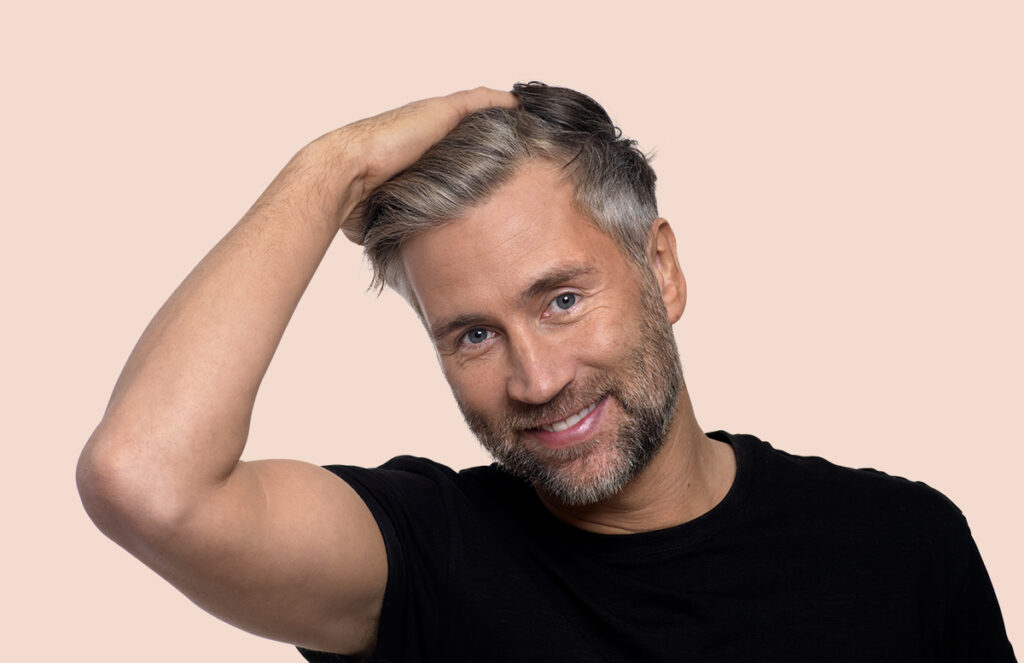Hair loss can be a deeply personal and emotional experience for both men and women. It often impacts not just our physical appearance but also our self-esteem and self-confidence. For many, it can feel like a silent struggle, something to be hidden and not discussed openly. This reluctance to talk about hair loss has led to a significant stigma around hair systems, a highly effective and innovative solution for regaining lost hair. In this article, we will explore the reasons behind this stigma, the benefits of hair systems, and how we can break the silence and foster a more inclusive and accepting attitude towards this hair restoration method for both men and women.
Understanding the Stigma
Hair loss has long been associated with aging, and in a society obsessed with youth and beauty, it is no wonder that losing hair is often seen as a sign of diminishing attractiveness and virility. This stigma is not just an external perception but something deeply ingrained in the minds of those experiencing hair loss. It can lead to feelings of inadequacy, anxiety, and low self-esteem, making the struggle with hair loss much more than just a cosmetic concern.
This stigma affects both men and women, although the experiences may differ. For men, the idea of being bald or having a receding hairline can challenge traditional notions of masculinity. For women, it may be perceived as a loss of femininity. Consequently, many people go to great lengths to hide their hair loss and avoid discussing it openly. They resort to hats, scarves, wigs, or hairpieces to conceal the issue and to keep their struggles a secret from the world.
The Benefits of Hair Systems
Hair systems, sometimes referred to as hairpieces or wigs, have come a long way from their predecessors. Modern hair systems are no longer the unnatural, conspicuous pieces of the past. They have evolved into highly sophisticated, natural-looking solutions for hair loss, offering a myriad of benefits for both men and women.
- Natural Appearance: Hair systems today are designed to mimic the look, texture, and feel of natural hair. They come in various colors, styles, and lengths, allowing individuals to choose a hair system that suits their unique preferences.
- Confidence Boost: One of the most significant advantages of hair systems is the boost they provide to one’s self-esteem and confidence. The restoration of a full head of hair can have a profound impact on a person’s self-image, helping them feel more attractive and secure.
- Versatility: Hair systems are versatile and can be tailored to individual needs. They can be worn permanently or as a temporary solution, depending on the wearer’s preferences and lifestyle.
- Low Maintenance: Compared to other hair restoration methods, hair systems are relatively low maintenance. They don’t require invasive surgical procedures or ongoing medical treatments.
- Instant Results: Hair systems offer immediate results. There’s no waiting period for hair growth as with medications or hair transplant surgery.
- Affordability: Hair systems are generally more affordable than hair transplant surgery and other long-term treatments, making them a cost-effective option for many individuals.
- Privacy: For those who prefer to keep their hair loss private, hair systems offer a discreet solution. Most people won’t even notice you’re wearing one.
- Customization: Hair systems can be customized to match your specific hair type, color, and style, ensuring a seamless and natural appearance.
Breaking the Stigma
To break the stigma surrounding hair systems for men and women, we need to foster a culture of openness, understanding, and acceptance. Here are some steps to achieve this:
- Start Conversations: The first step is to start talking openly about hair loss and hair systems. When individuals share their experiences, they can help demystify the process and show that it’s a common concern that many people face.
- Education: Providing accurate information about hair systems can dispel myths and misconceptions. Understanding the technology and advancements in the field of hair restoration can help people make informed decisions about their hair loss.
- Normalize Hair Systems: Normalize the use of hair systems as a valid and effective solution to hair loss. Just as wearing eyeglasses for vision correction is considered normal, we should encourage a similar acceptance of hair systems.
- Support and Empathy: For those facing hair loss, offering support and empathy is essential. Be understanding of their struggles and provide encouragement to explore available options, including hair systems.
- Celebrities and Role Models: When public figures, including celebrities, share their experiences with hair systems, it can have a profound impact on reducing the stigma. Their openness can inspire others to seek solutions and embrace their choice without fear of judgment.
- Media Representation: The media plays a significant role in shaping societal perceptions. Encourage more positive and realistic portrayals of individuals with hair systems in movies, TV shows, and advertising.
- Champion Self-Acceptance: Remind people that self-worth is not determined by the presence or absence of hair. Encourage a broader definition of beauty that includes people of all appearances and backgrounds.
- Professional Guidance: Seek guidance from hair restoration professionals and experts who can provide valuable insights and support on the journey to hair restoration.
Conclusion
The stigma surrounding hair systems for men and women is rooted in societal perceptions and unrealistic beauty standards. It’s time to break the silence and encourage open conversations about hair loss and the effective solutions available, including hair systems. By normalizing the use of hair systems, we can empower individuals to make informed choices, boost their self-confidence, and feel comfortable in their own skin. In the end, what truly matters is the content of one’s character, not the thickness of their hair. It’s time to redefine our beauty standards and promote a more inclusive and accepting society.

